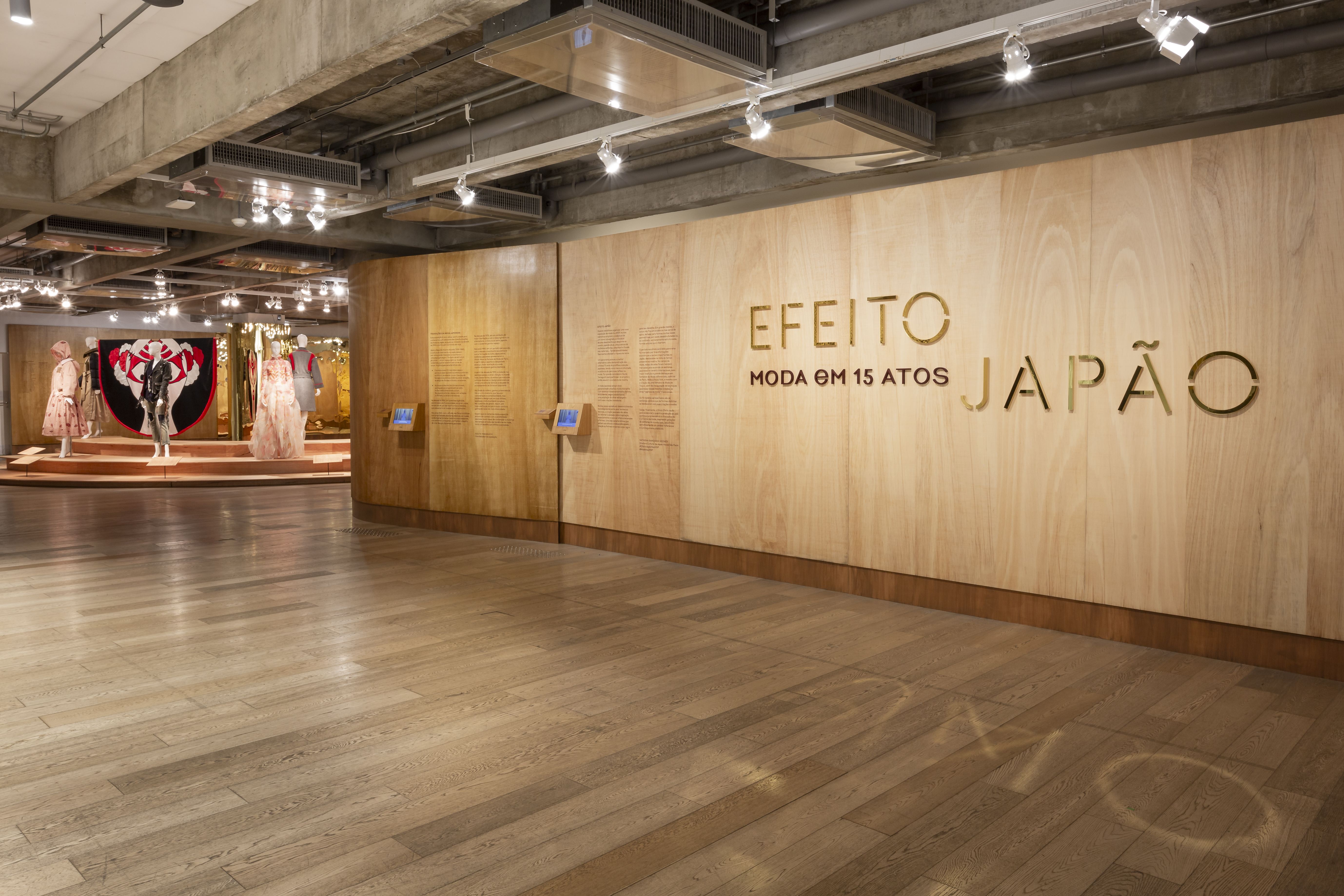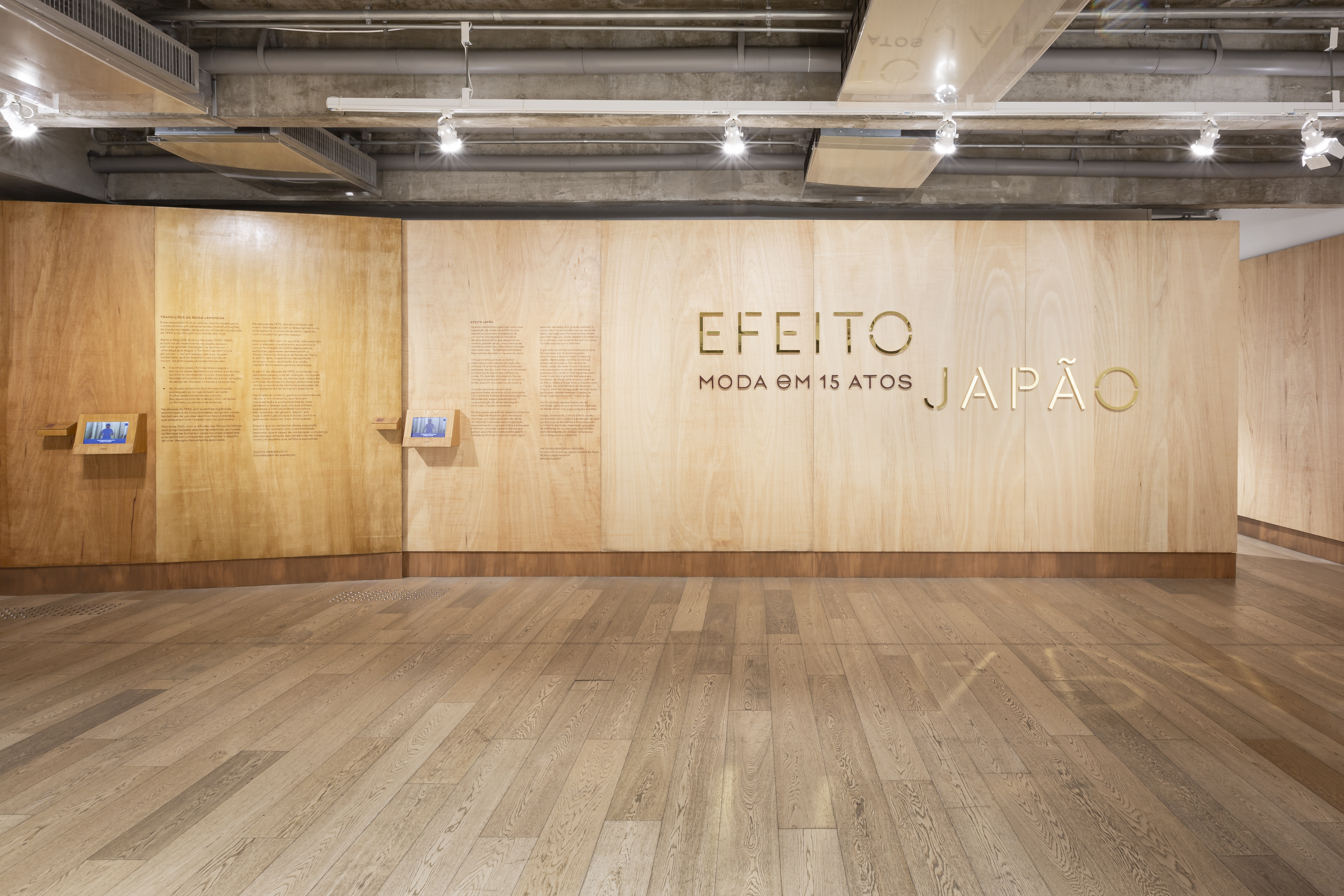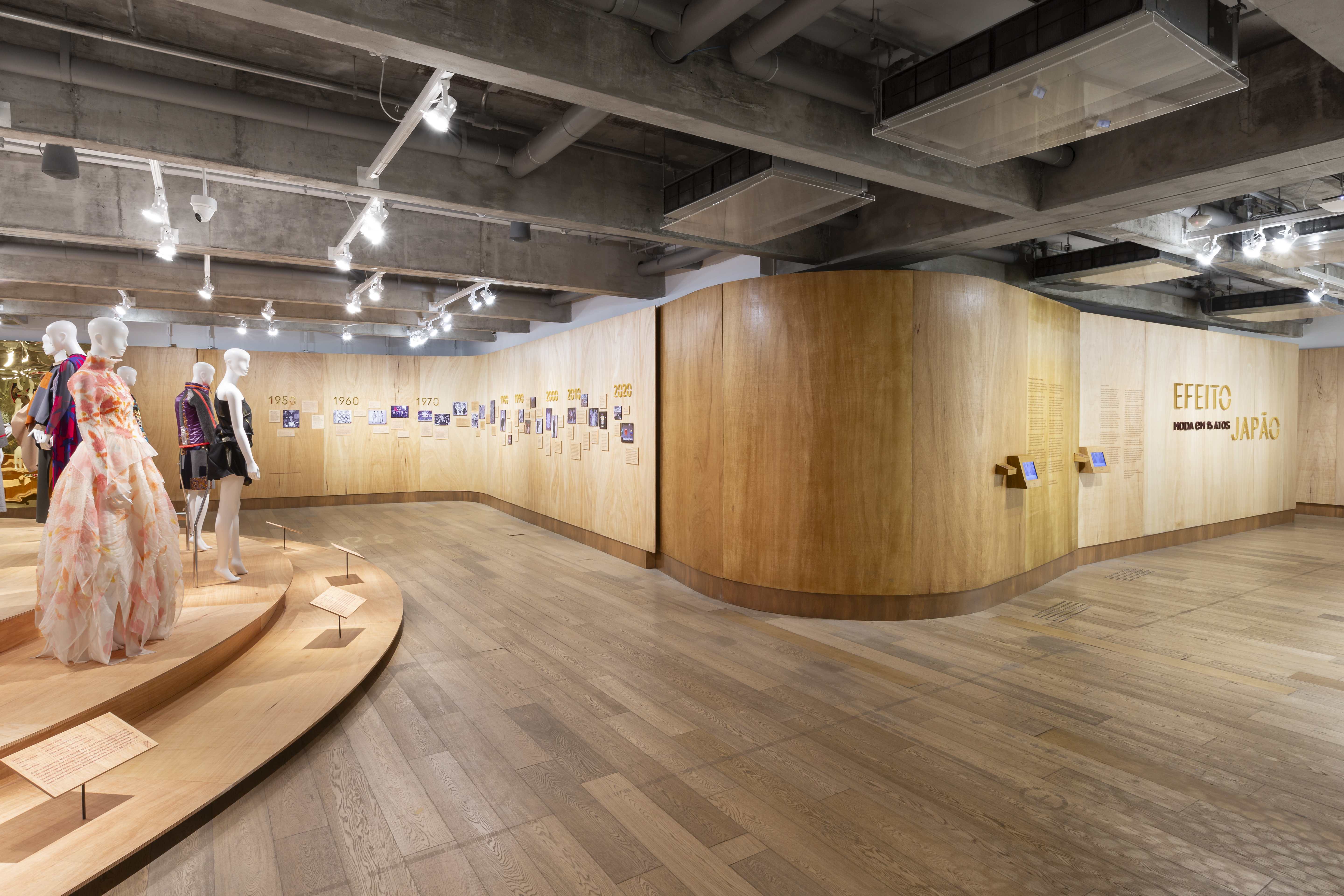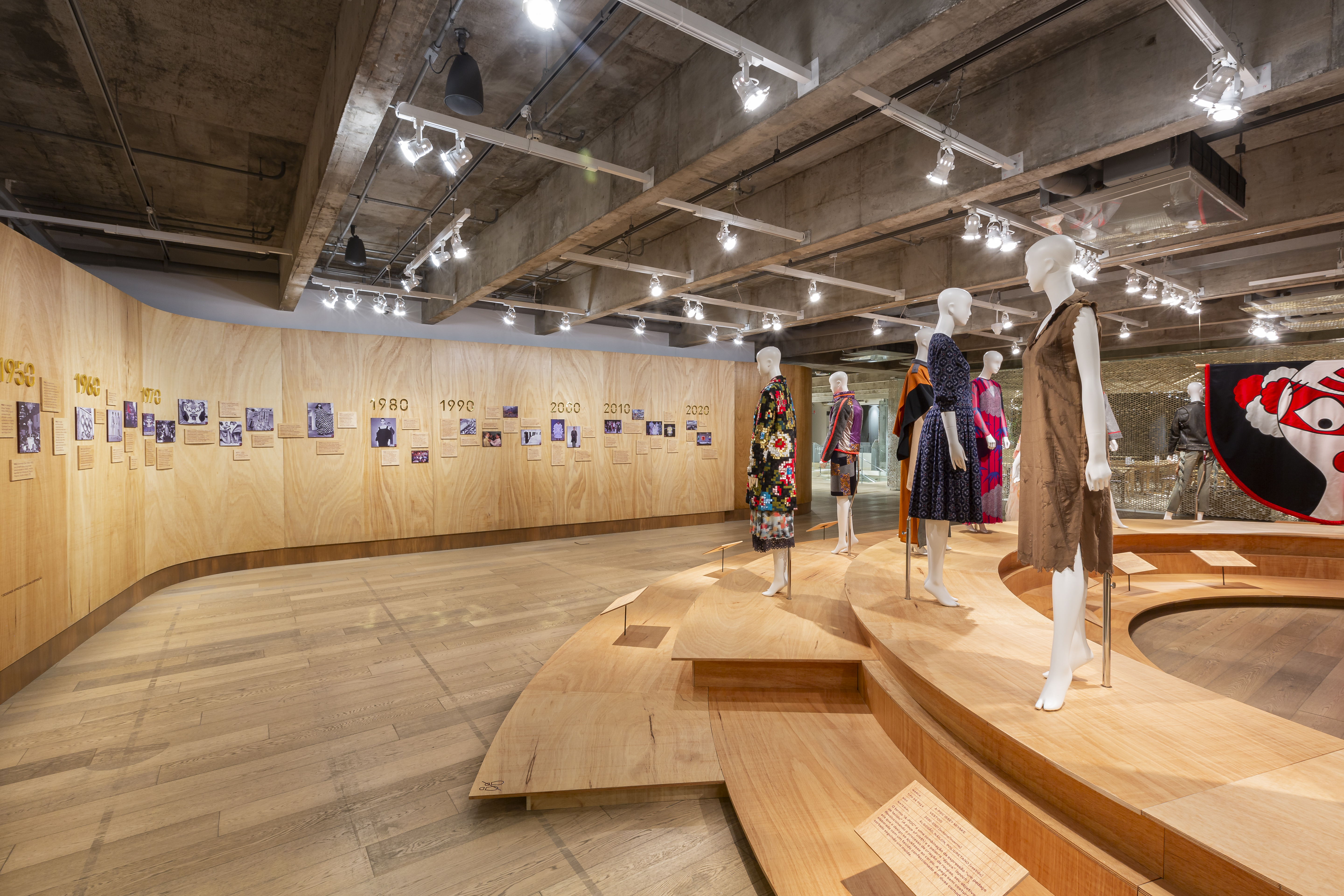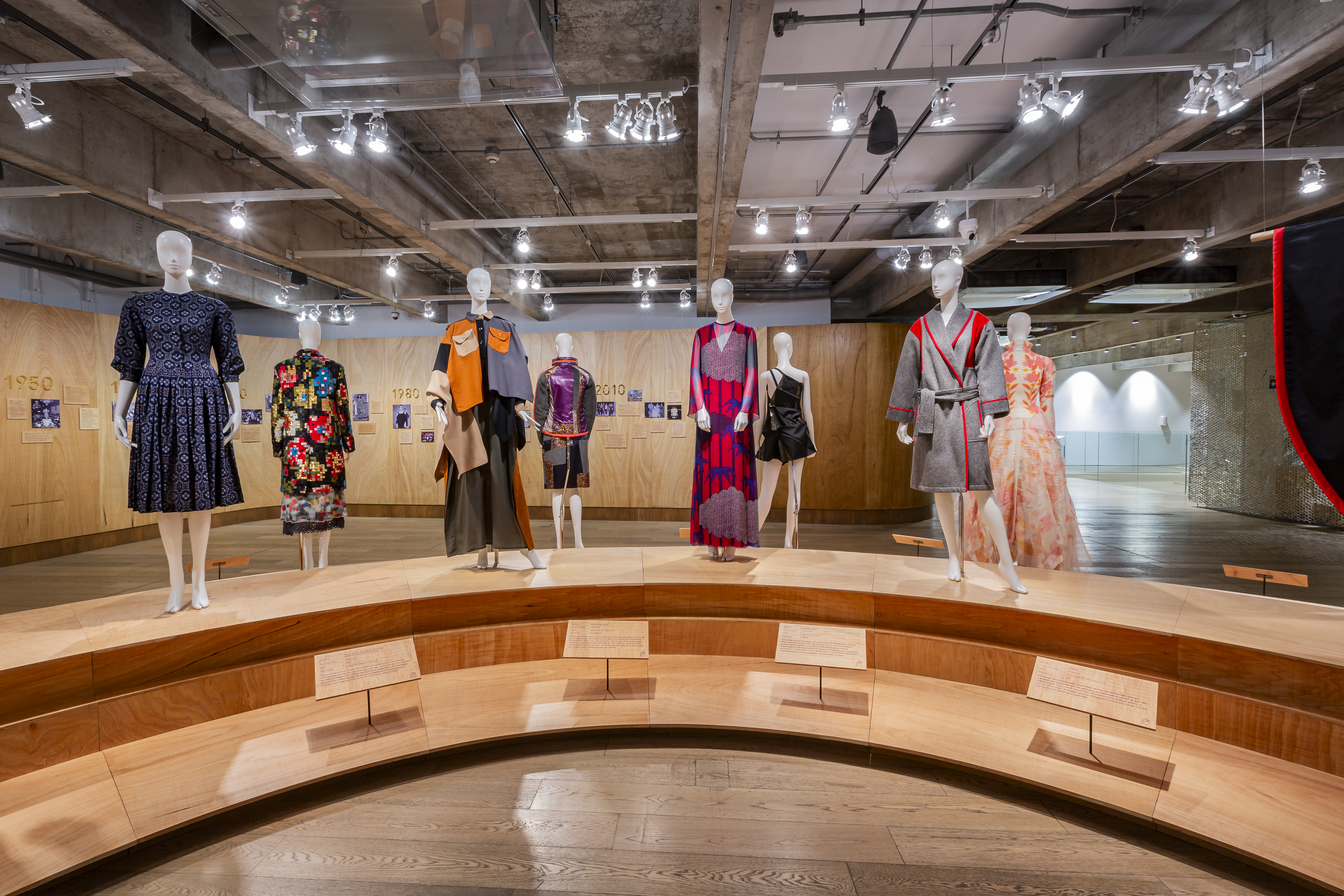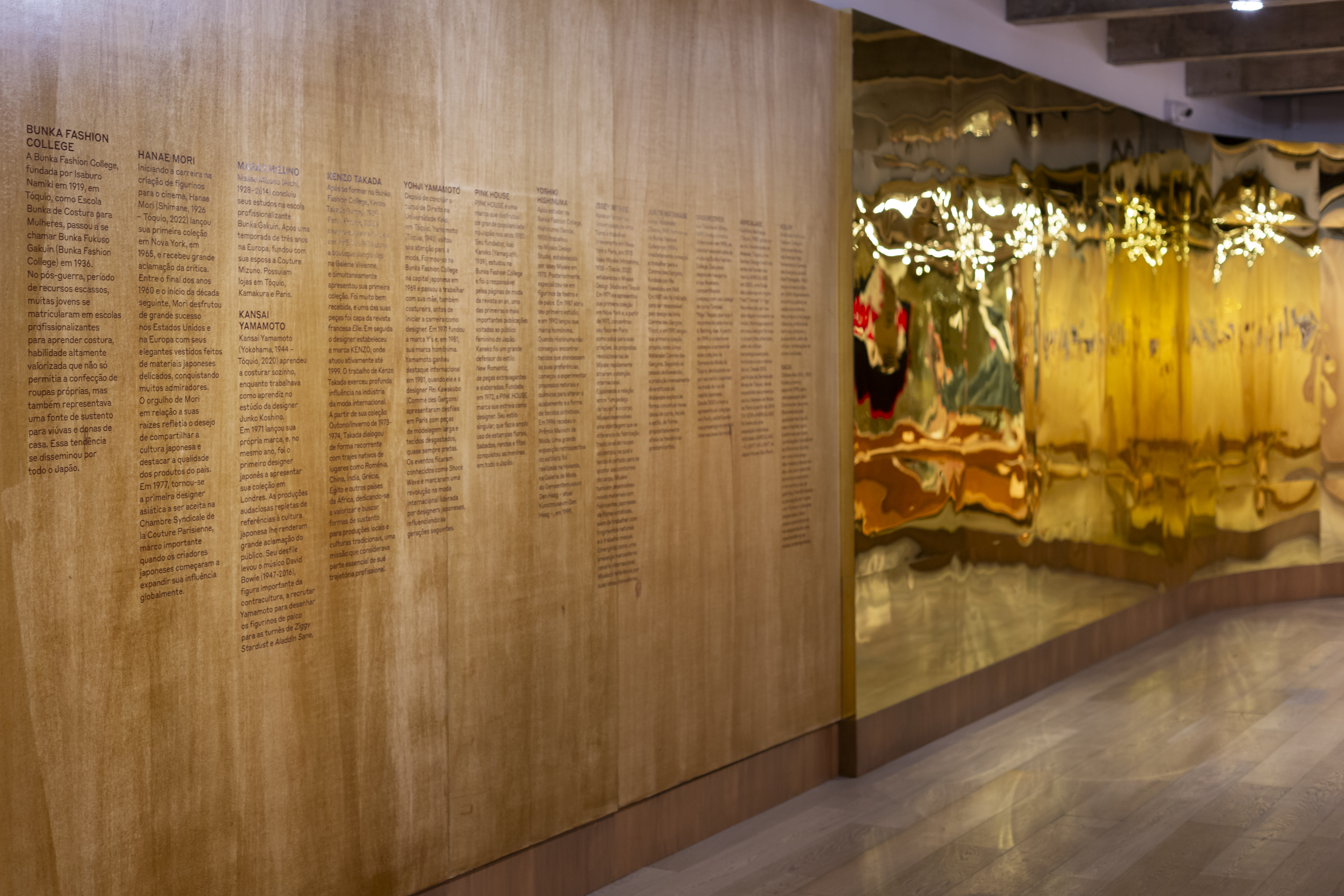- Date
May 7 to October 6, 2024
- Tuesday to Friday
from 10 am to 6pm
- Saturdays, Sundays and holidays
from 10 am to 7 pm
- Fee
free admission
- Early booking (optional)
- The exhibition has accessibility features

Japan effect: fashion in 15 acts
The exhibition “Japan effect: fashion in 15 acts” shines a spotlight on the impact and influences of Japanese fashion on the global stage. Through 15 outfits curated from significant Japanese designers, the exhibition aims to unveil the influential nature of Japanese design. It showcases how Japanese fashion assimilates global trends and transforms them into new ones with a unique sensitivity.
The exhibition was organized by fashion director Souta Yamaguchi. Yamaguchi is known for designing the attire worn by the staff during the medal ceremonies at the Tokyo 2020 Olympic and Paralympic Games. Yamaguchi has even given a lecture at Japan House São Paulo.
Among the pieces selected especially for the exhibition are productions by Hanae Mori (1926 - 2022); Masao Mizuno (1928 - 2014); Kansai Yamamoto (1944 - 2020); Kenzo Takada (1939 - 2020); Yohji Yamamoto (1943); Isao Kaneko (1939); Yoshiki Hishinuma (1958); Issey Miyake (1938 - 2022); Junya Watanabe (1961); Jun Takahashi (1969); Kunihiko Morinaga (1980); Junichi Abe (1965) and Chitose Abe (1965).
Japanese fashion as a mirror that reflects society
"This exhibition provides a valuable opportunity to witness the evolution of fashion in Japan, a journey that began in the 1950s and continues to unfold today." "I hope that visitors to this exhibition will encounter the Japanese sensibility, which has the ability to reflect on changing times through fashion trends, much like a mirror reflecting society", says exhibition coordinator Souta Yamaguchi.
The complex singularities of the traditional and contemporary
The exhibition uses its pieces and a timeline to showcase key historical milestones and social contexts of fashion in Japan and globally, starting from the post-World War II era. This period marked a significant transition in Japan's clothing culture, moving from kimonos to Western attire. The exhibition also explores the rise of Japanese designers on the global stage and the impact of Japanese street style.
The exhibition also explores emerging figures in Japanese fashion who are pioneering contemporary trends. These include designers who utilize cutting-edge technology with a focus on sustainability, as well as promising talents making their mark on the global stage by expressing their unique and intricate styles.
“Visitors are bound to encounter at least one familiar name during their visit to this exhibition. Many of these designers are internationally renowned for their innovation and creativity, which have made Japanese fashion influential worldwide.” Some of the names featured in the exhibition have previously participated in activities at Japan House São Paulo.“ To delve deeper, we will host several sideline activities focusing on Japanese fashion, culminating in the opening of another complementary exhibition soon,” highlights Japan House São Paulo Cultural Director Natasha Barzaghi Geenen.
The storie that the works on display reveal
1950’s:
Postwar Japan was redefining both the kimono and Western clothing in terms of function, hygiene, and economy. The oldest piece in the exhibition is made with a combination of kimono fabrics made using traditional Okinawan weaving techniques, Ryūkyū kasuri, in which cotton is dyed with natural dyes. The garment was created during a period when fashion shows started to become popular in Japan, mirroring the historical shift in Japanese fashion from kimonos to Western attire.
1960’s:
The introduction of stretchy synthetic fabrics marked the gradual integration of Western clothing, initiating a shift in Japanese-style design. One of the showcased pieces is a bamboo print dress crafted from a single piece of polyester crepe fabric, without any cuts in the shoulder area. Hanae Mori, the first Asian designer to be accepted into the Chambre Syndicale de la Couture Parisienne, created this remarkable piece.
1970’s:
A resurgence of orientalism emerged in a context characterized by freedom, leading to the popularity of styles that blended Japanese and Western influences. Such references can be seen in Kenzo Takada’s piece, sewn in straight lines like a kimono and described as “anti haute couture.” Another example is the creation of Kansai Yamamoto, who boldly used a motif used in painting Japanese kites to create a jumpsuit based on the Kabuki costume.
1980’s:
Two important moments emerged in the 1980s. The first style showcased is extravagant fashion, which mirrored Japan’s rapid economic growth and economic bubble. This is represented in the exhibition by a voluminous piece adorned with delicate pleats, lace, ruffles, and appliqués, which form the foundation of Japan's kawaii culture. On the other hand, “Shock Wave” was born in the same period. This was a movement that rejected Western elegance, illustrated by a piece with bold drapes with several overlapping layers of raw wool.
1990’s:
Japanese street style has garnered international attention, featuring styles that blend diverse cultures and designs using advanced processing techniques. Yoshiki Hishinuma, who worked in the MIYAKE DESIGN STUDIO, used the term polyester plasticity to create works applying the traditional Japanese technique shibori (dyeing that involves attaching parts of the fabric that will not be dyed and dipping it in pigment, creating organic and exclusive prints).
2000’s onwards:
Minimalist designs emerged that consider sustainability and the expression of the complexity of personalities. In this manner, pieces are crafted by combining various materials of different textures, featuring asymmetrical shapes and seamless seams. The intention is to disrupt beauty itself and transform the clothing making process by allowing the user to create the design.
The exhibition showcases the avant-garde patchwork by ANREALAGE, a brand that has previously exhibited at JHSP. This work transcends the boundaries between digital and analog, offering a comprehensive view of the ever-evolving and diverse transition of contemporary Japanese fashion.
Accessible JHSP program
As part of the Accessible JHSP program, the exhibition “Japan effect: fashion in 15 acts” provides tactile resources, audio descriptions, and sign language support.
![]()
--
Service:
Exhibition // Japan Effect: Fashion in 15 Acts
#EfeitoJapãoNaJHSP #ModaNaJHSP
Coordination: Souta Yamaguchi
Period: May 7 to October 6, 2024
Cost: Free admission
The exhibition has accessibility resources (Sign language, audio descriptions, tactile elements).
Early booking (optional): https://agendamento.japanhousesp.com.br
Japan House São Paulo | second floor
Location: Avenida Paulista, 52 – Bela Vista, São Paulo
Opening hours:
Tuesday to Friday, from 10 am to 6 pm
Saturdays, Sundays and holidays, from 10 am to 7 pm
Japan House São Paulo remains closed on Mondays, without exception, including on holidays.


